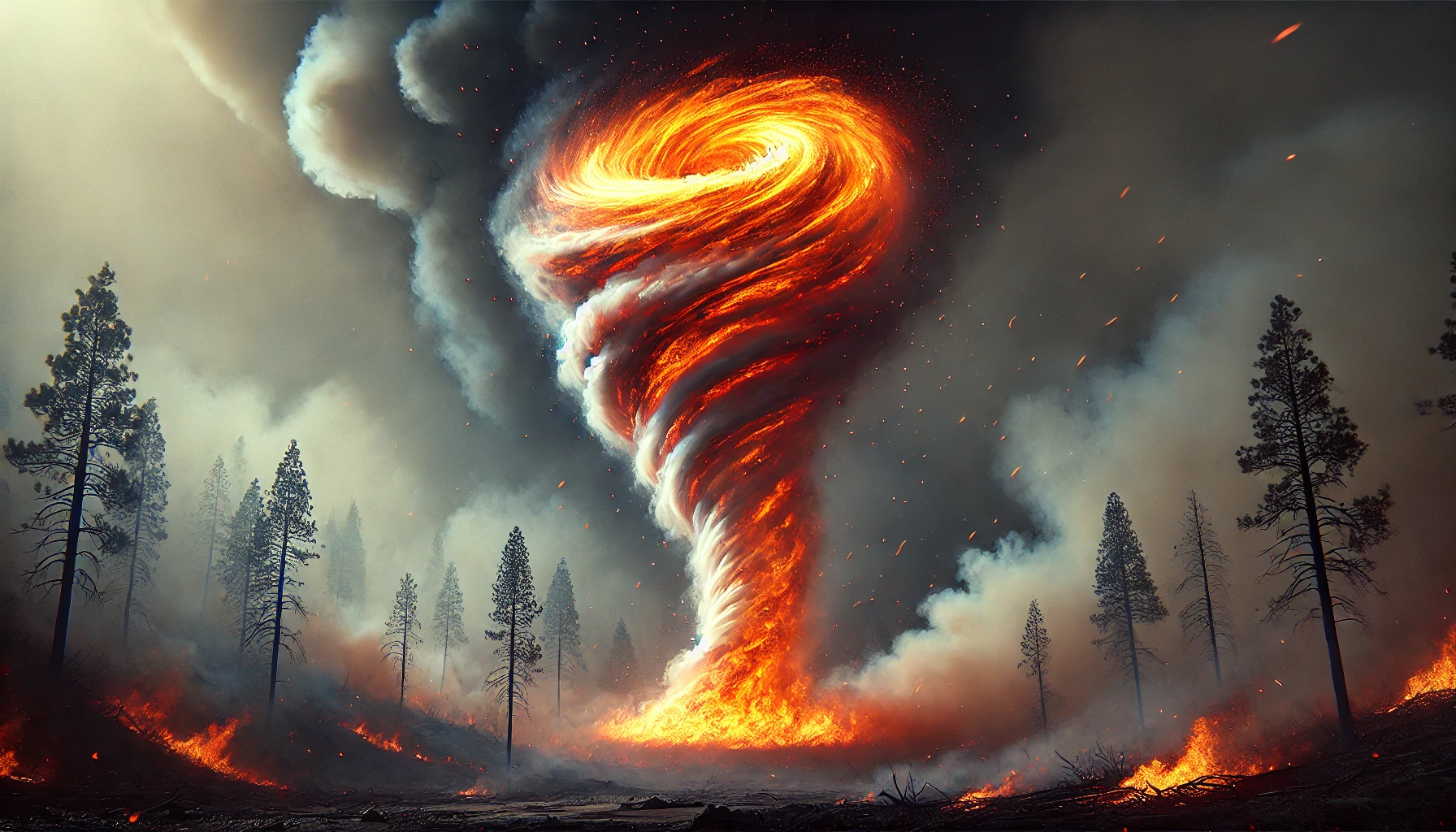A fire whirl—also known as a fire tornado or fire devil—is one of the most powerful and mesmerizing phenomena that can occur during wildfires. These fiery cyclones are formed when intense heat from a fire causes air to rise rapidly, pulling smoke and flames into a swirling vortex. As the whirl spins, it can grow to incredible heights and expand in size, creating a dangerous and stunning spectacle. Often resembling a tornado of fire, fire whirls have a reputation for their destructive power and awe-inspiring beauty.
What is a Fire Whirlpool?
A fire whirl is a rotating column of air and flame. It forms when hot air rises rapidly due to intense heat produced by a large fire. The updraft pulls in surrounding air, which, when mixed with the rising heat, starts to spin, forming a vortex. This vortex is then filled with smoke, flames, and embers, and as it continues to spin, the fire whirl can become a towering and twisting column of fire.
Fire whirls vary in size, but they can be extremely powerful, with some reaching heights of over 100 feet. The temperatures within a fire whirl can soar to over 2,000°F (1,093°C), making them potentially lethal to anyone who gets too close.
How Do Fire Whirls Form?
Fire whirls typically form in the aftermath of wildfires, especially in areas with very hot, dry conditions and high winds. The specific conditions that contribute to the creation of a fire whirl include:
- Intense Heat: Wildfires generate large amounts of heat, which causes the air above the fire to rise rapidly.
- Strong Updrafts: When the hot air rises, it creates a vacuum that sucks in cooler air from the surroundings. As this air enters the hot zone, it begins to spin.
- Wind: Wind plays a significant role in the formation and movement of a fire whirl. The stronger the winds, the more intense and widespread the whirl can become.
- Topography: The landscape’s features, such as valleys or uneven terrain, can affect the air’s movement and contribute to the creation of a fire whirl.
The conditions required to form a fire whirl are rare, which is why they are considered one of the most dramatic and dangerous phenomena associated with wildfires.
The Destructive Power of Fire Whirls
Fire whirls are capable of causing massive destruction. As they spin, they can uproot trees, ignite new fires in surrounding areas, and launch embers long distances, potentially starting additional wildfires. The power of a fire whirl is such that it can easily lift debris, including burning materials, and propel them across wide distances.
The strength of a fire whirl is not only in its heat but also in the fact that it behaves similarly to a tornado. Fire whirls can move unpredictably, making them extremely dangerous for firefighters and anyone in their path. The fire’s intensity can increase exponentially as the whirl accelerates, and its erratic movement can cause it to leap across firebreaks, making containment efforts more difficult.
The Beauty of Fire Whirls
While fire whirls are deadly, they also have an undeniable beauty. The swirling vortex of flames creates an ethereal, almost hypnotic effect, with the bright orange and red colors of the fire contrasting against the dark smoke and sky. This spectacle, while destructive, can evoke a sense of awe in those who witness it from a safe distance. The patterns created by the flames are constantly changing, making each fire whirl a unique and dynamic display of nature’s power.
Fire Whirls and Their Role in Wildfires
Although fire whirls are often seen as a dangerous byproduct of wildfires, they also play a role in the behavior of the fire itself. The intense heat and swirling motion created by fire whirls can cause rapid changes in the direction of the fire, allowing it to spread in unexpected ways. Fire whirls may also contribute to the increased intensity of a wildfire, as they cause the fire to burn hotter and faster.
Firefighters and wildfire experts closely monitor fire whirls during wildfires because of their unpredictable and destructive behavior. Understanding how these whirls form and behave is essential for developing strategies to mitigate their effects and prevent further damage.
How to Stay Safe During Wildfires and Fire Whirls
The best way to stay safe during a wildfire, particularly if fire whirls are present, is to avoid the area entirely. If you live in a wildfire-prone region, make sure to have an emergency plan in place and stay informed about fire conditions through local news and official alerts.
If you are a firefighter, understanding the behavior of fire whirls is crucial for making safe decisions during wildfire containment efforts. Always approach these dangerous situations with caution and be prepared for rapidly changing conditions.
Conclusion: The Raw Power of Fire Whirls
Fire whirls are a remarkable example of nature’s raw power, combining the destructive force of a wildfire with the unpredictable behavior of a tornado. Fire rainbows are also remarkable. These fiery cyclones serve as both a reminder of the dangers of wildfires and an awe-inspiring testament to nature’s ability to create beauty in even the most extreme circumstances.


1 thought on “The Spectacular and Destructive Phenomenon of Fire Whirls”